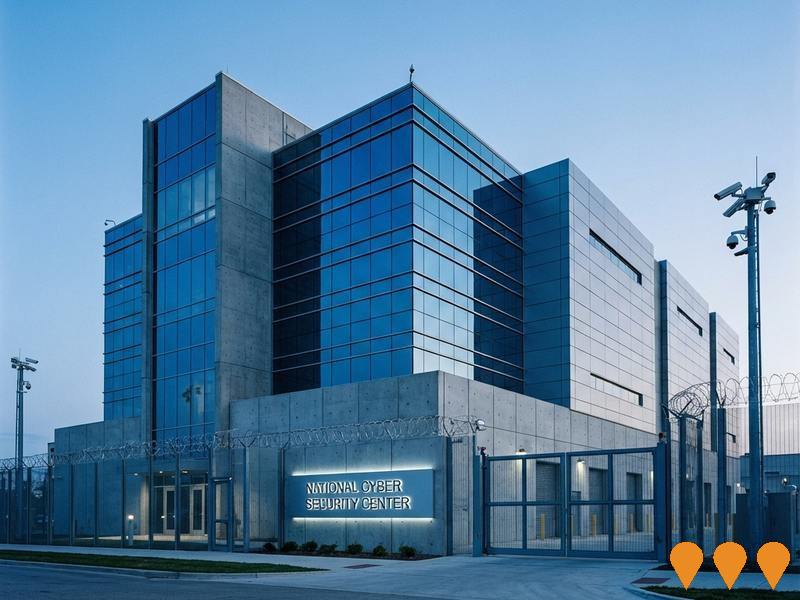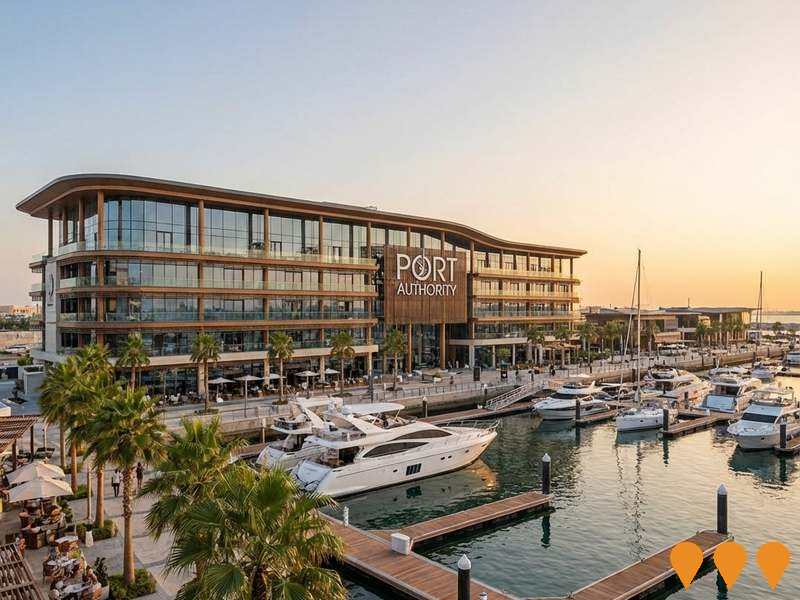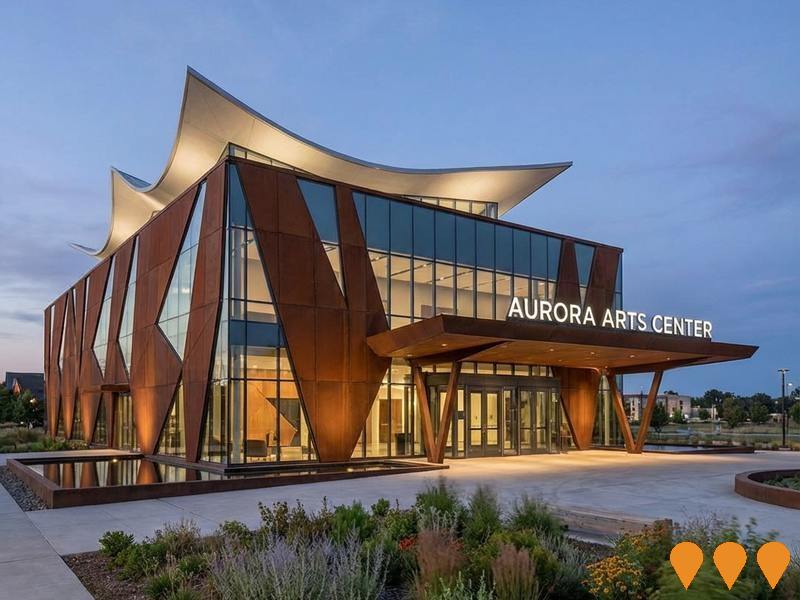Chart Color Schemes
est. as @ -- *
ABS ERP | -- people | --
2021 Census | -- people
Sales Activity
Curious about local property values? Filter the chart to assess the volume and appreciation (including resales) trends and regional comparisons, or scroll to the map below view this information at an individual property level.
Find a Recent Sale
Sales Detail
Population
Duntroon has seen population growth performance typically on par with national averages when looking at short and medium term trends
Duntroon's population, as per AreaSearch's analysis, is approximately 2,239 as of Aug 2025. This figure represents a growth of 265 people, marking a 13.4% increase since the 2021 Census which reported a population of 1,974. The change was inferred from the estimated resident population of 2,241 in June 2024 and an additional 7 validated new addresses post-Census date. This results in a population density ratio of 929 persons per square kilometer, comparable to averages seen across other locations assessed by AreaSearch. Duntroon's growth rate exceeded the state average of 5.7% since the 2021 Census, positioning it as a growth leader in its SA4 region. Interstate migration contributed approximately 46.2% of overall population gains during recent periods, with all drivers including overseas migration and natural growth being positive factors.
AreaSearch's projections for each SA2 area are based on ABS/Geoscience Australia data released in 2024, using 2022 as the base year. For areas not covered by this data and years post-2032, age group growth rates from the ACT Government's SA2 area projections with a 2022 base are adopted. According to these projections, Duntroon's population is expected to decline by 41 persons by 2041.
Frequently Asked Questions - Population
Development
Residential development activity is lower than average in Duntroon according to AreaSearch's national comparison of local real estate markets
Duntroon has seen approximately three new homes approved annually over the past five financial years, totalling 18 homes. As of FY-26, zero approvals have been recorded. On average, 9.6 people per year moved to the area for each dwelling built between FY-21 and FY-25, indicating supply lagging behind demand and potential buyer competition leading to pricing pressures. This financial year has seen $20.3 million in commercial development approvals, suggesting balanced commercial development activity.
Compared to the Australian Capital Territory average, Duntroon shows significantly reduced construction (88.0% below regional average per person), which typically strengthens demand and prices for existing properties. This is also under the national average, indicating the area's established nature and potential planning limitations. Population projections show stability or decline in Duntroon, suggesting reduced housing demand pressures that could benefit potential buyers.
With population projections showing stability or decline, Duntroon should see reduced housing demand pressures, benefiting potential buyers.
Frequently Asked Questions - Development
Infrastructure
Duntroon has strong levels of nearby infrastructure activity, ranking in the top 40% nationally
Two projects identified by AreaSearch are likely to impact the area: Australian Defence Force Academy Living-In Accommodation and Australian War Memorial Redevelopment.
Professional plan users can use the search below to filter and access additional projects.
INFRASTRUCTURE SEARCH
 Denotes AI-based impression for illustrative purposes only, not to be taken as definitive under any circumstances. Please follow links and conduct other investigations from the project's source for actual imagery. Developers and project owners wishing us to use original imagery please Contact Us and we will do so.
Denotes AI-based impression for illustrative purposes only, not to be taken as definitive under any circumstances. Please follow links and conduct other investigations from the project's source for actual imagery. Developers and project owners wishing us to use original imagery please Contact Us and we will do so.
Frequently Asked Questions - Infrastructure
Canberra Hospital Master Plan
Long-term transformation of Canberra Hospital campus (2021-2041). The new Critical Services Building (Building 5) opened in 2023. Multiple stages are now in construction or detailed planning, including SPIRE Stage 1 (new emergency, surgical and intensive care facilities) and ongoing campus renewal works to deliver modern clinical facilities.

Australian War Memorial Redevelopment
The Australian War Memorial's redevelopment enlarges visitor spaces by 83%, adding 10,000 sqm for exhibitions and programs. Includes a new exhibitions area, better facilities, reflection spaces, education centers, a theatre, veterans' areas, and electronic displays.
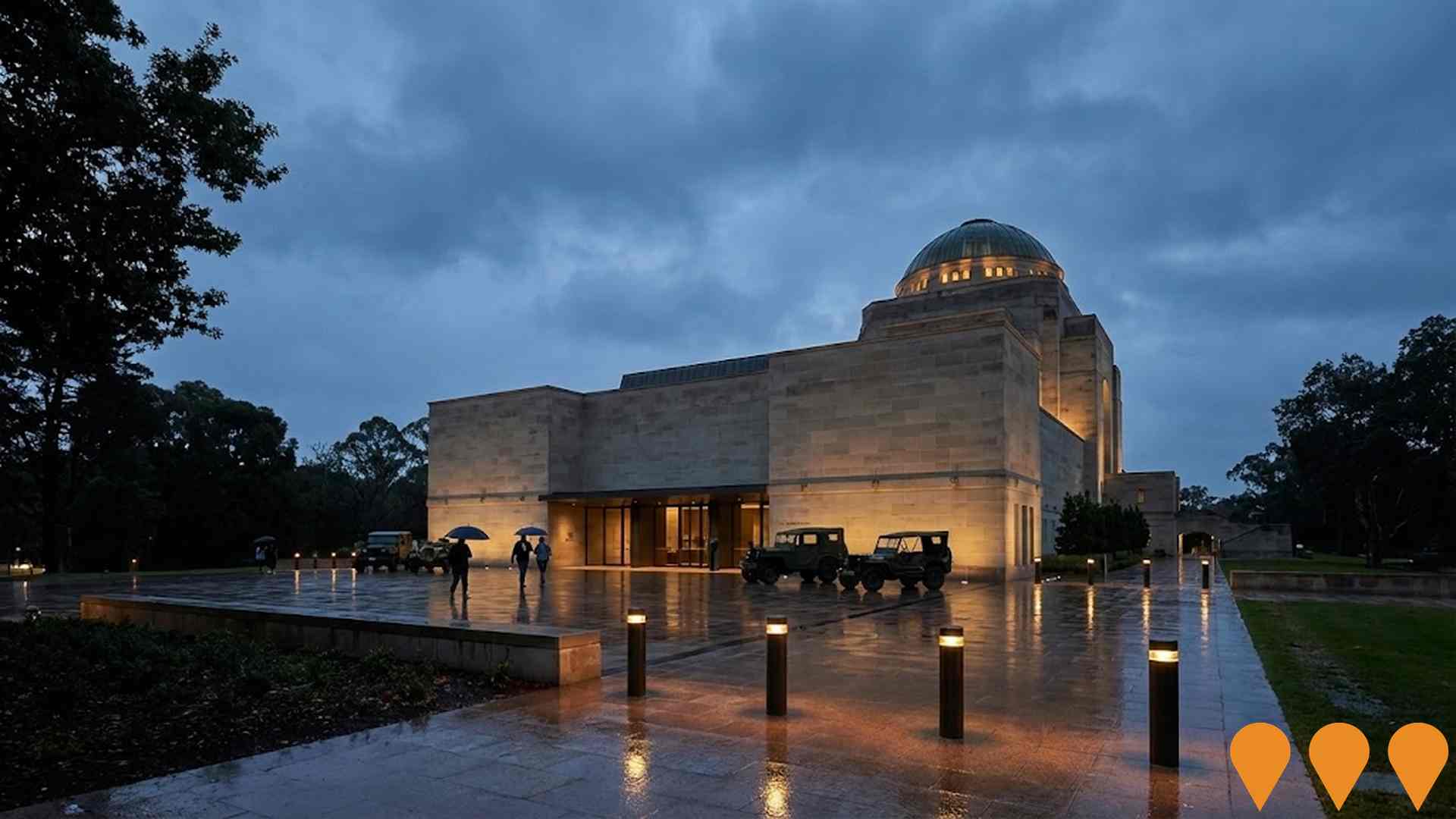
Enhanced bus and light rail corridors (Belconnen & Queanbeyan to Central Canberra)
ACT is progressing an integrated program to enhance high-frequency bus and future light rail corridors that link Belconnen and Queanbeyan with central Canberra. Light Rail Stage 2A (City to Commonwealth Park) commenced construction in early 2025 with services targeted from 2028, while planning and approvals continue for Stage 2B to Woden. The ACT Government has acknowledged and is planning upgrades for the Belconnen-to-City bus corridor as groundwork for a future east-west light rail Stage 3, and is coordinating cross-border public transport initiatives with NSW through the Queanbeyan Region Integrated Transport Plan and the ACT-NSW MoU for Regional Collaboration.
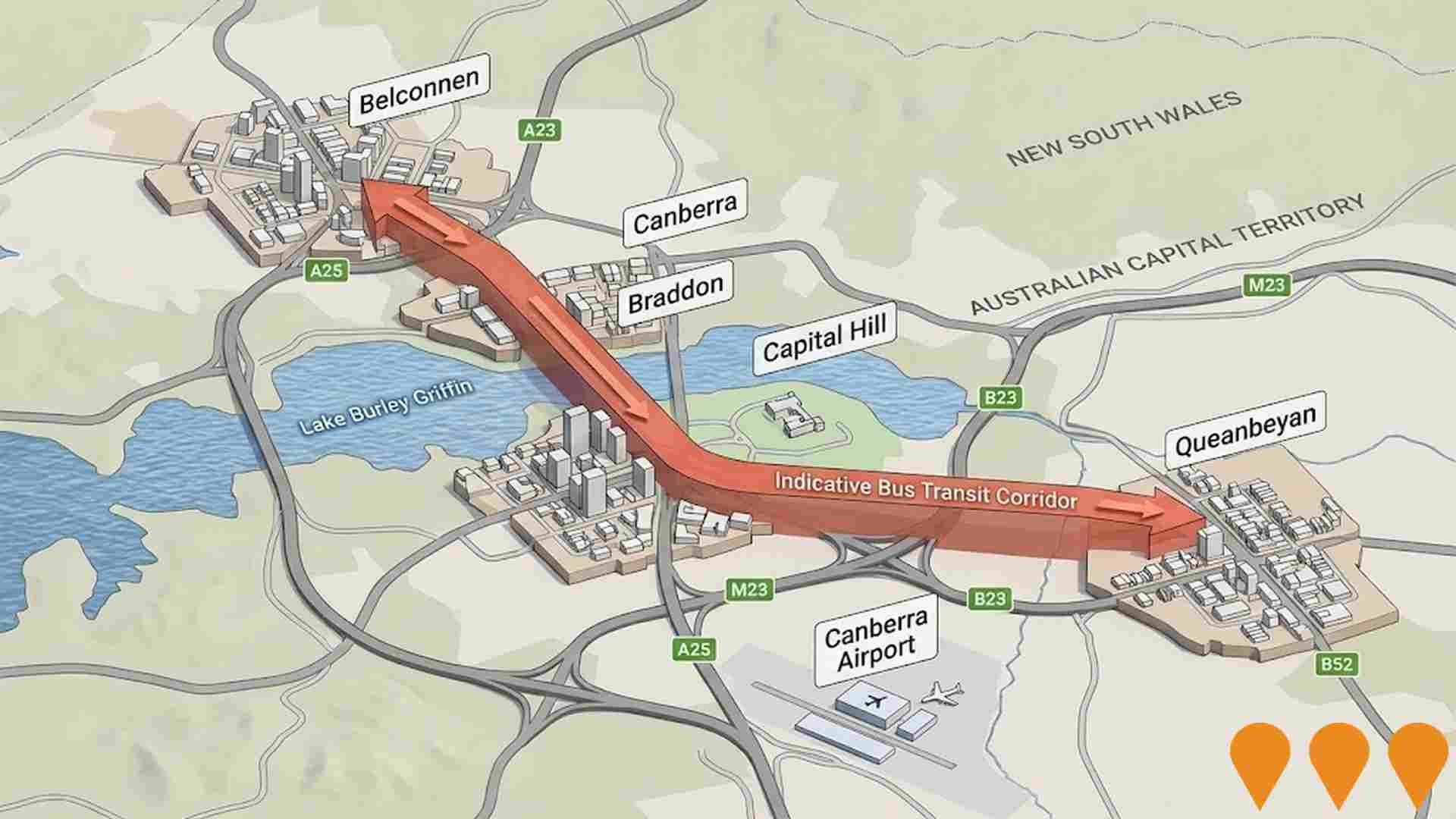
Queanbeyan Regional Integrated Transport Plan
Comprehensive transport planning initiative with 64 key actions for next 10 years. Addresses road safety, active transport connectivity, public transport availability, and future transport needs. Improved connections between Queanbeyan and ACT.
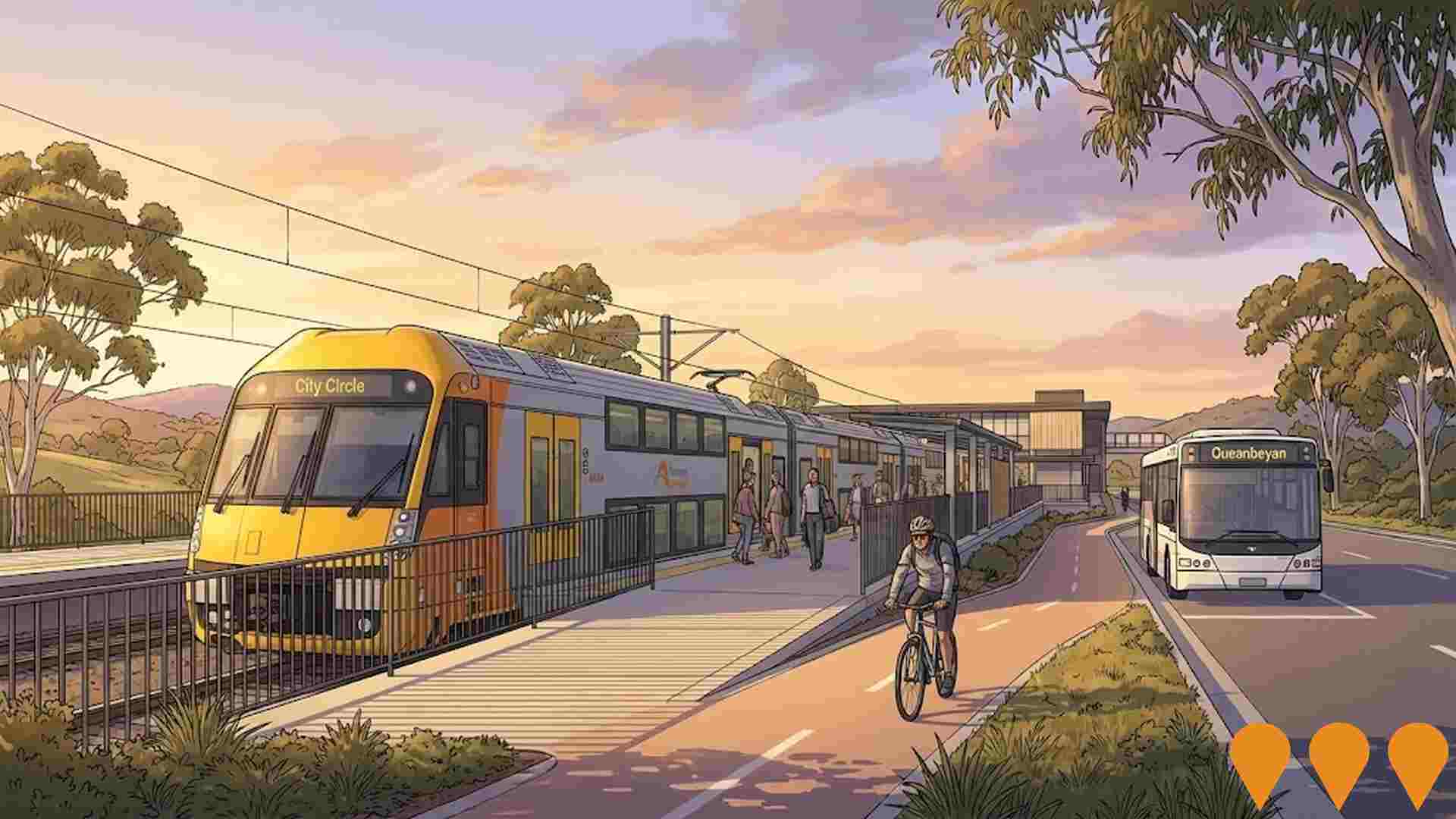
Campbell Primary School Modernisation
Comprehensive upgrade and modernisation of Campbell Primary School delivering new classrooms, library and administration spaces, outdoor learning areas and improved accessibility. Works were completed at the start of Term 2, 2022 to support contemporary learning and enrolment growth.

Campbell Neighbourhood Oval Upgrade
Proposed upgrade of the existing neighbourhood oval including improved drainage, resurfacing, and community facilities to support local sporting clubs. The project is focused on sportsground improvements.
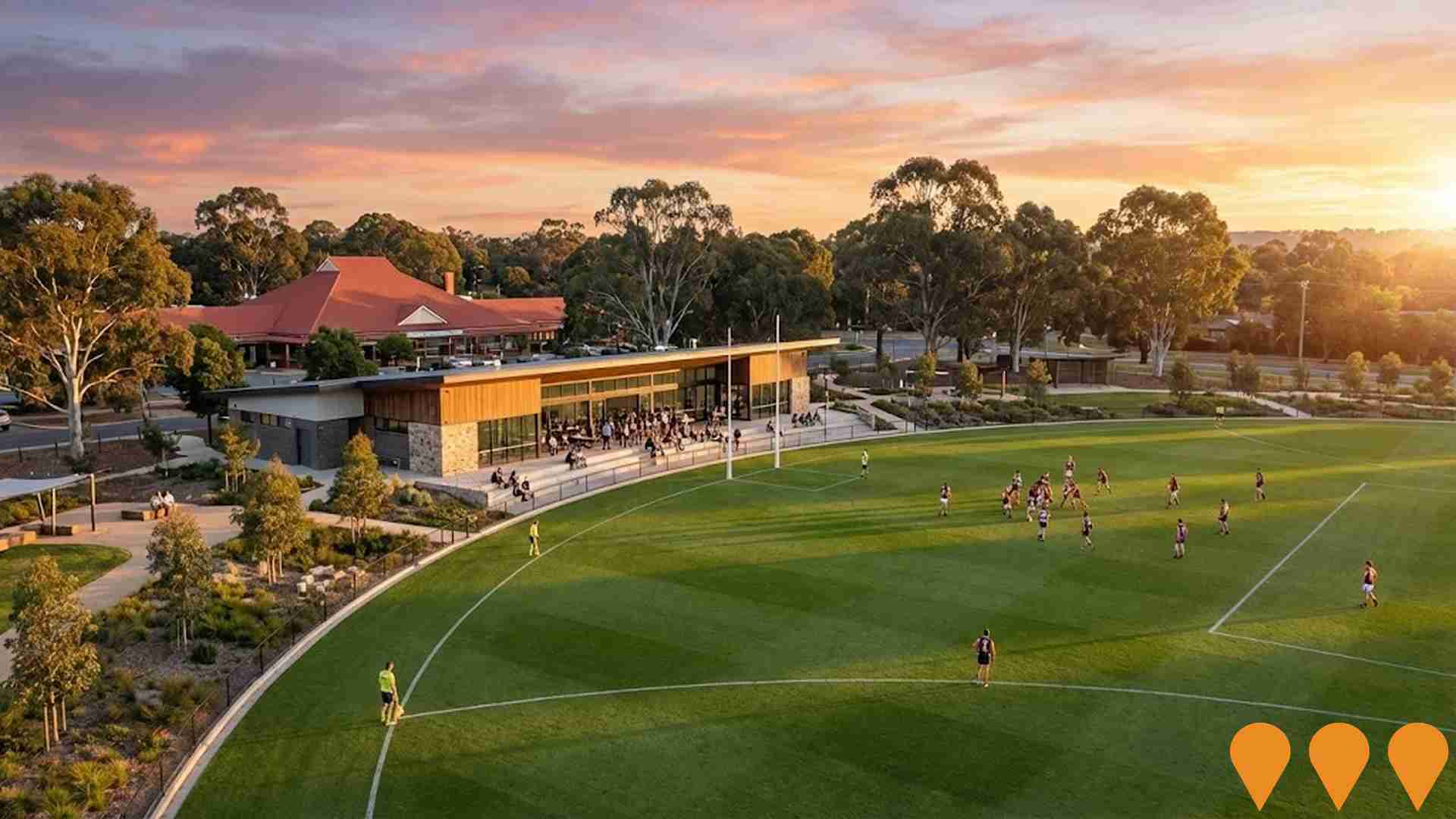
Campbell 5 Precinct Redevelopment (C5)
A completed, large-scale mixed-use residential precinct by JWLand in Campbell, ACT, consisting of five buildings (Saint Germain, Greenwich, Koben, Siena, and The Parade) which delivered over 500 apartments. The precinct includes significant public domain improvements, retail/commercial spaces, and the award-winning Hassett Park. The development is situated directly opposite Campbell shops and adjacent to Russell and the Lake Burley Griffin foreshore.
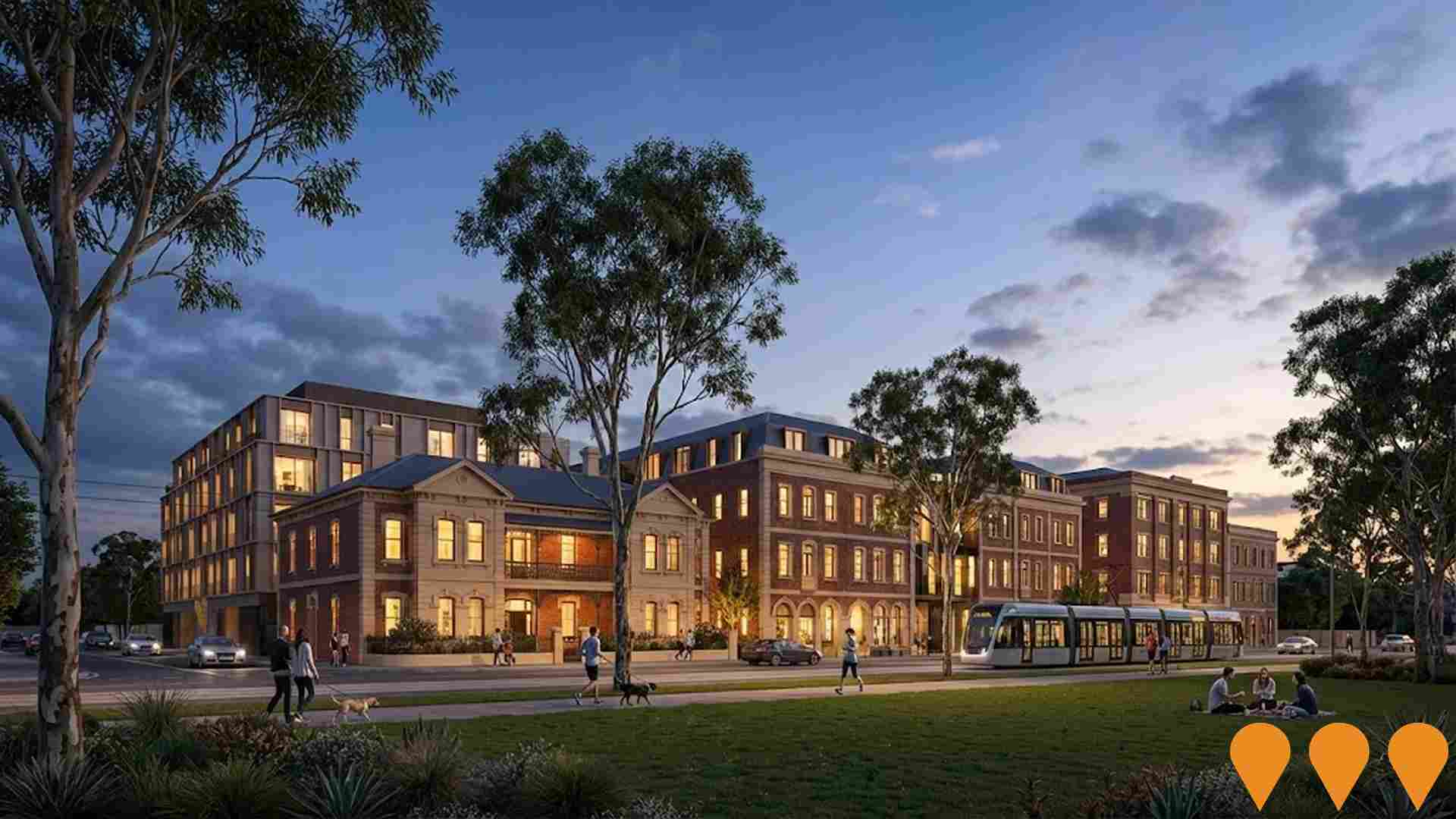
Deakin Private Hospital
Deakin Private Hospital offers premium and integrated inpatient, day therapy, and hospital-in-the-home services, focusing on individualised and high-quality mental health treatment. It includes a Specialised PTSD & Trauma Support Unit for military and first responders, and services such as Repetitive Transcranial Magnetic Stimulation (rTMS) for depression. The hospital also features co-located clinics and is supported by a multidisciplinary team of Psychiatrists, Medical, Nursing, and Allied Health professionals.

Employment
Error processing employment analysis
Income
Income analysis reveals strong economic positioning, with the area outperforming 60% of locations assessed nationally by AreaSearch
Duntroon had a median taxpayer income of $48,719 and an average income of $62,688 in financial year 2022. This was lower than the national averages of $53,112 (median) and $77,115 (average). As of September 2025, based on a 13.6% increase since 2022, estimated incomes are approximately $55,345 (median) and $71,214 (average). According to Census 2021 data, Duntroon's household incomes ranked at the 98th percentile, with a weekly income of $3,100. The earnings profile showed that 41.2% of residents earned between $1,500 and $2,999 per week. After housing costs, residents retained 91.3% of their income, indicating strong purchasing power. The suburb's SEIFA income ranking placed it in the 5th decile, suggesting considerable affluence that supports premium retail and service offerings.
Frequently Asked Questions - Income
Housing
Duntroon is characterized by a predominantly suburban housing profile, with a higher proportion of rental properties than the broader region
Duntroon's dwelling structure, as recorded in the latest Census, consisted of 95.1% houses and 4.9% other dwellings. In contrast, the Australian Capital Territory had 39.3% houses and 60.7% other dwellings. Home ownership in Duntroon was at 0%, with all other dwellings either mortgaged or rented. The median monthly mortgage repayment was $0, lower than the Australian Capital Territory average of $2,080. The median weekly rent was $270, compared to the Australian Capital Territory's $476 and the national average of $375.
Frequently Asked Questions - Housing
Household Composition
Duntroon features high concentrations of family households and group households, with a higher-than-average median household size
Family households account for 87.5% of all households, including 45.5% couples with children, 38.6% couples without children, and 3.4% single parent families. Non-family households make up the remaining 12.5%, consisting of 8.3% lone person households and 4.1% group households. The median household size is 2.8 people, which is larger than the Australian Capital Territory average of 2.2.
Frequently Asked Questions - Households
Local Schools & Education
Duntroon faces educational challenges, with performance metrics placing it in the bottom quartile of areas assessed nationally
The area's university qualification rate is 23.5%, significantly lower than the SA3 area average of 59.7%. Bachelor degrees are most common at 16.6%, followed by postgraduate qualifications at 5.8% and graduate diplomas at 1.1%. Vocational pathways account for 23.5% of qualifications among those aged 15 and above, with advanced diplomas at 8.4% and certificates at 15.1%. Educational participation is high, with 78.0% of residents currently enrolled in formal education.
This includes 67.3% in tertiary education, 3.3% in primary education, and 1.3% pursuing secondary education. However, educational facilities appear to be located outside the immediate catchment boundaries, requiring families to access schools in neighboring areas.
Frequently Asked Questions - Education
Schools Detail
Nearby Services & Amenities
Transport
Transport servicing is low compared to other areas nationally based on assessment of service frequency, route connectivity and accessibility
Transport analysis shows 13 active stops in Duntroon served by buses. These stops are covered by one route, offering 170 weekly passenger trips combined.
On average, there are 24 trips daily across all routes, which translates to about 13 weekly trips per stop.
Frequently Asked Questions - Transport
Transport Stops Detail
Health
Duntroon's residents boast exceedingly positive health performance metrics with a range of health conditions having marked impacts on both younger and older age cohorts
Health outcomes data shows significant results across Duntroon, with various health conditions affecting both younger and older age groups. Private health cover stands at approximately 51% of the total population (~1,144 people), slightly lower than the average SA2 area's 65.3%.
The most prevalent medical conditions are asthma (4.3%) and mental health issues (3.1%). A majority, 91.7%, report being completely free from medical ailments compared to the Australian Capital Territory's 70.8%. Duntroon has a lower proportion of residents aged 65 and over at 0.1% (3 people), compared to the ACT's 11.4%. Health outcomes among seniors require more attention than those in the broader population.
Frequently Asked Questions - Health
Cultural Diversity
In terms of cultural diversity, Duntroon records figures broadly comparable to the national average, as found in AreaSearch's assessment of a number of language and cultural background related metrics
Duntroon's cultural diversity was found to align with the broader region, with 77.4% of its population being citizens, 80.7% born in Australia, and 88.0% speaking English only at home. Christianity was the predominant religion in Duntroon, accounting for 36.9% of people, while Islam was overrepresented at 1.6%, compared to the Australian Capital Territory's average of 1.9%. The top three ancestry groups were Australian (29.6%), English (26.3%), and Irish (8.4%).
Notably, New Zealand (1.3%) and Korean (0.4%) groups were overrepresented in Duntroon compared to regional averages of 0.5% and 0.7%, respectively.
Frequently Asked Questions - Diversity
Age
Duntroon hosts a very young demographic, ranking in the bottom 10% of areas nationwide
Duntroon's median age is 24 years, which is significantly below the Australian Capital Territory average of 35 years and substantially under Australia's national average of 38 years. Compared to the Australian Capital Territory, Duntroon has a higher concentration of residents aged 15-24 at 66.3%, but fewer residents aged 35-44 at 6.4%. This concentration of 15-24 year-olds is well above the national average of 12.5%. Between the 2021 Census and the present, Duntroon's median age has increased by 3.3 years from 21 to 24 years, indicating an aging population. Notable changes include the growth of the 45 to 54 age group from 1.9% to 4.0% of the population, and the increase of the 25 to 34 cohort from 14.1% to 15.3%. Conversely, the 15 to 24 cohort has declined from 71.3% to 66.3%. Demographic modeling suggests that Duntroon's age profile will evolve significantly by the year 2041. The 55 to 64 cohort is projected to show strong growth, adding 0 residents to reach 37. Meanwhile, the 65 to 74 and 85+ cohorts are expected to experience population declines.
